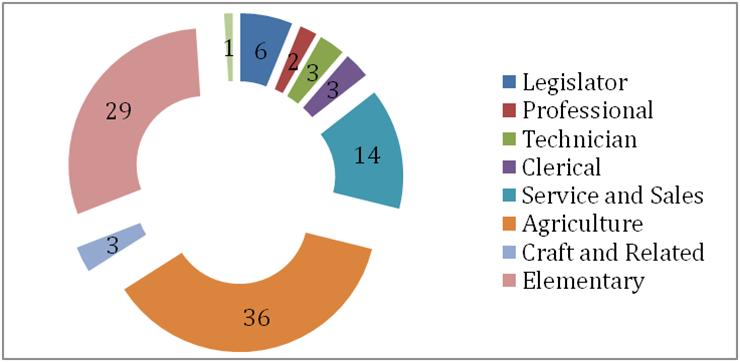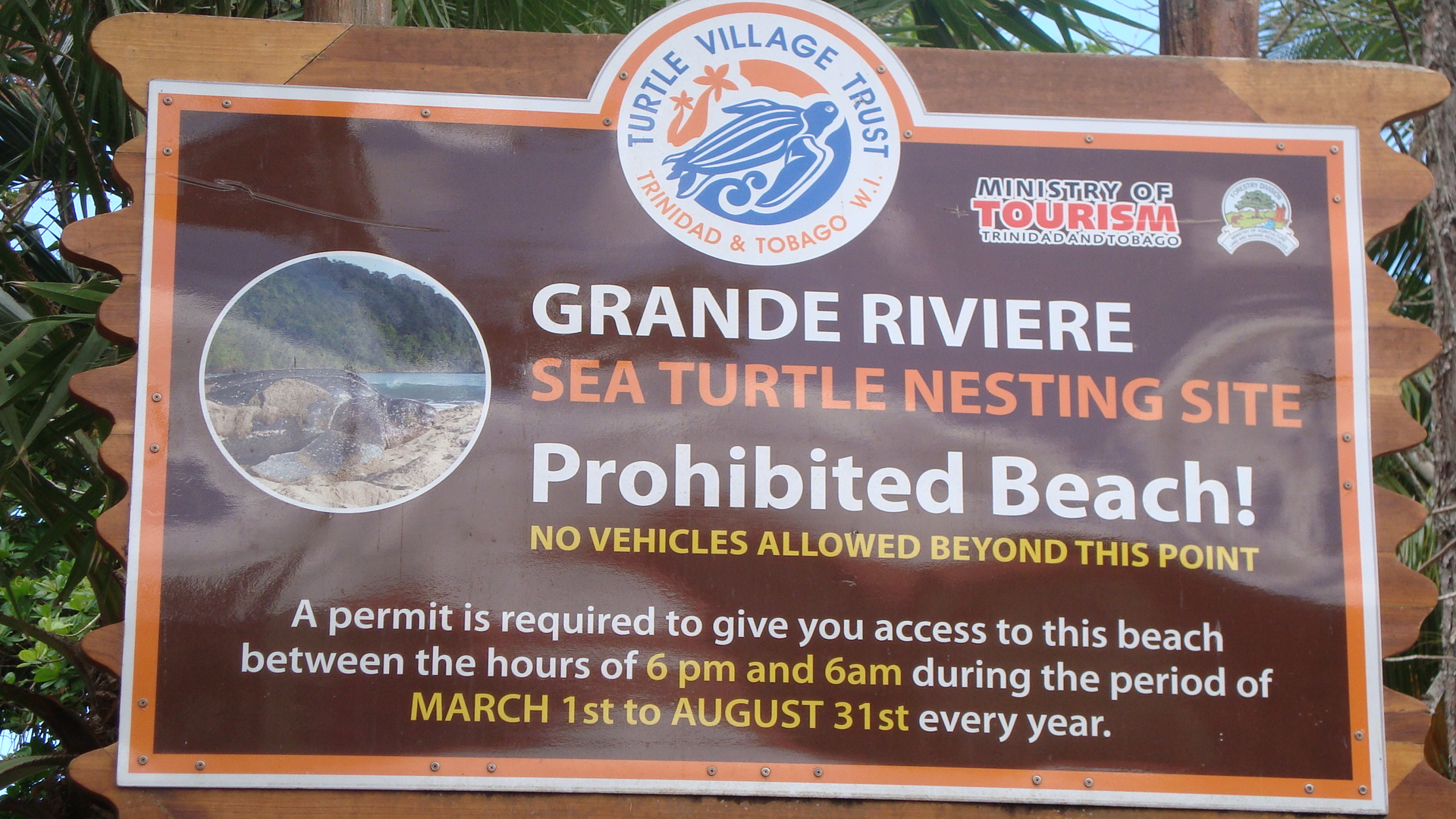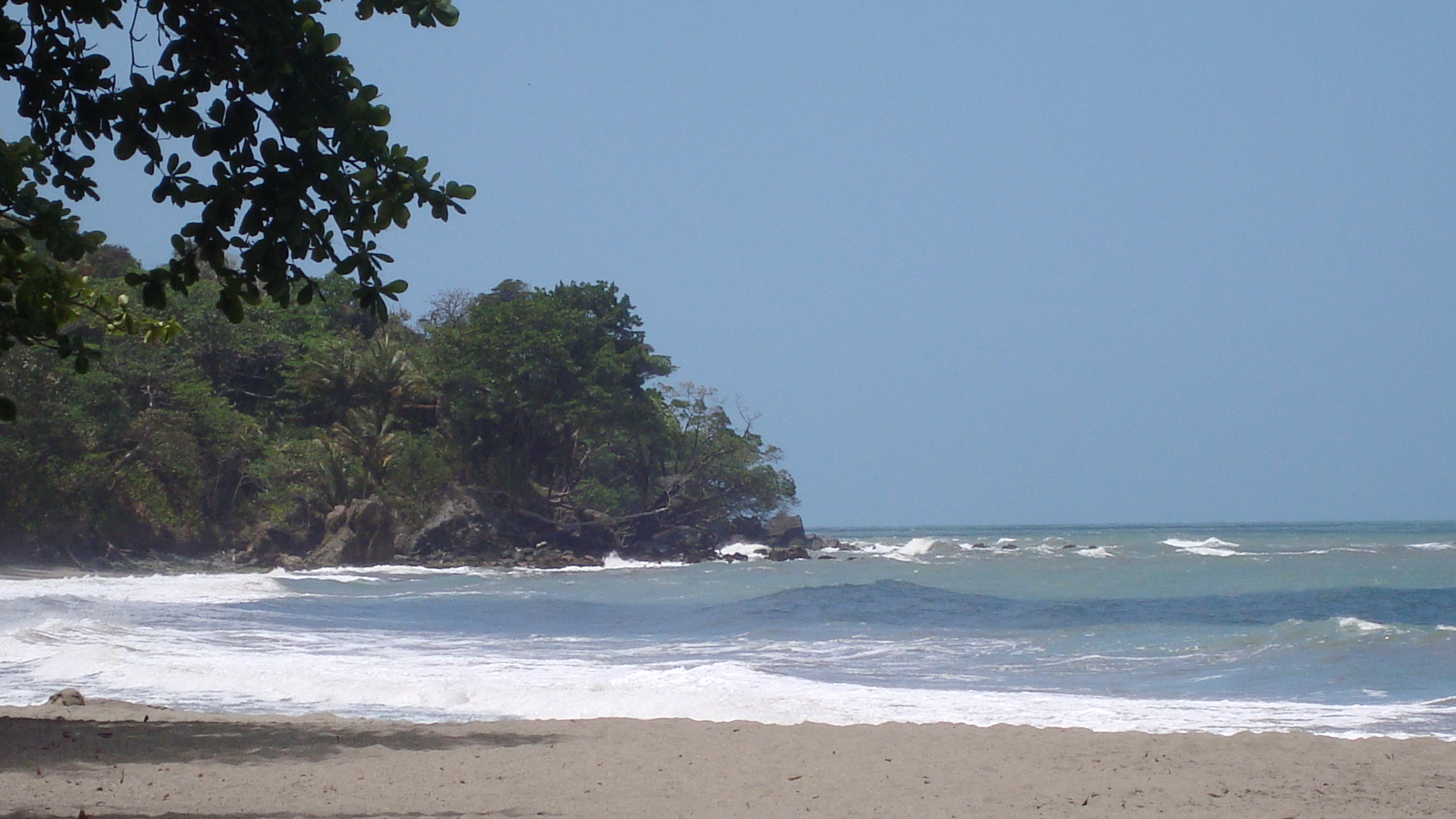
Environmental
The coastal community of Grande Riviere (or Grand’Rivière) is situated in the north-eastern part of Trinidad, the last island located in the Southern Caribbean archipelago.
Grande Riviere is located in a valley, and entry into the village is marked by a noticeable descent from the mountainous Northern Range of Trinidad. The paved, two-lane Paria Main Road that is the only access road to this community divides the area into two distinct types of terrain. On the left hand side of this road, the land slopes upward into a hilly or mountainous formation of the Northern Range. In contrast, the profile of the land on the right hand side is both narrower and of varying distances from the coastline. The Caribbean Sea is visible on the right hand side of the main road during the journey throughout the community.

Map Source: Harrison (2007) Cocoa, Conservation and Tourism Grande Riviere, Trinidad.
Annals of Tourism Research, 34(4), pp. 919-242.
Two very crucial types of biodiversity present in Grande Riviere are the leatherback turtle and the endemic pawi or piping-guan. Both of these animals are listed as critically endangered species of animals on the International Union for Conservation of Nature (IUCN) Red List of Threatened Species for 2009.
The Table below depicts some of the past, present and potential environmental issues or problems that have had, continue to have and may potentially have major implications on Grande Riviere.

Sources: Harrison (2007); Waylen et al. (2009); Muhammad (2010).
Climate change effects on leatherback turtles can be significant. Limpus (2006) identified some of the impacts of Climate Change on marine turtles using the following broad variables: (i) Impacts of rising temperatures on the Turtle Nesting Beaches; (ii) Impacts of sea level rise on the Turtle Nesting Beaches.
Suitable temperatures for the proper incubation of Leatherback turtle eggs in clutches (nests) range from between 25 C to 32 C. In addition, the sex of a hatchling is dependent on the temperature of the beach. Hence, hatchlings that are born in cooler beaches tend to be males and those on warmer beaches, females. A sex ratio of 1:2 or 1:3, favouring female turtles, has been a rule of thumb for many turtle populations. One of the implications of rising temperatures attributable to climate change is therefore a distortion of turtle populations caused by altered sex ratios, such as 1:5 or 1:6, favouring excess females. Another implication is the death of turtle eggs within the clutch due to unfavourable temperatures that reach and exceed the upper lethal limit of 340C. A third implication of the above is the outright preference of female turtles for other nesting sites with more favourable temperatures that would thus preserve their offspring. A direct resultant impact of sea level rise in low-lying coastal areas includes the cycle of flooding and erosion on the beach. This may result in the increased mortality of turtle eggs with the consequent loss of the beach as a turtle nesting site as nesting mothers resort to other beaches.
Economic
From the settlement of the Grande Riviere community in the 1860’s, agriculture was the main economic activity, where the Venezuelan labourers cultivated and sold subsistence crops and cocoa in order to earn income. In the period 1870 to 1920, cocoa production took centre stage, with more and more economic activity being derived from this industry. By 1900, this resulted in significant economic development of this community. The period 1910 to 1920 was characterised by an economic boom for Grande Riviere, centred around a large cocoa estate located in the village, where residents planted and sold cocoa to this estate. This period was also marked by intra-island trade with other villages, cities, and the capital city of Port-of-Spain. In the period of the 1920’s and the 1930’s, the decline of the cocoa industry led directly to continued economic contraction of the Grande Riviere area. By the 1970’s, one-third of the men on the village earned income from agriculture, another one-third were employed on various road-works programmes of the Government, and others earned income from the sale of agricultural produce from their own gardens. By 2006, over sixty jobs were created by the Government of Trinidad and Tobago via the Regional Corporation, the Community-based Environmental Protection and Enhancement Program, the Unemployment Relief Program, and the National Reforestation and Watershed Program. According to the 2000 National Census, approximately 55% of the community was unemployed. Of those who were employed, the majority of the community in jobs related to the Agricultural, Elementary and Service Sectors, respectively (see Figure below). Less than fifteen percent of those surveys were employed as Legislators, Professionals, Technicians and Clerical staff. Additionally, three percent of the individuals were involved in craft.

Source: Central Statistical Office (CSO) of Trinidad and Tobago
Ecotourism activities in Grande Riviere revolve around the pristine environment that exists in this relatively small and isolated village, including a natural environment with waterfalls, river and nature trails, and biodiversity that includes birds, trees, leatherback turtles (which has a seasonal appearance of March to August annually), and the pawi or piping-guan. Collectively, both these natural resources and the related biodiversity relate to specific ecotourism activities that are possible in Grande Riviere: leatherback turtle watching, nature trails/hiking to the Matura National Park, sea and river bathing, and bird watching. In an anthropological study, Harrison (2007) indicated that Tourism was the most significant factor that had changed the life of villagers in the community over the period of 1870 to 2006.
The enjoyment of nature trails and hiking activities are available all year round. Bird watching in Grande Riviere is also of increasing importance, with the Pawi at the centre of these attractions. However, at present the ecotourism activities in the Grande Riviere community centre mainly around leatherback turtle nesting. Turtle watching is characterised by a significant seasonal inflow of both local and foreign tourists during the months of March to August annually. The Ministry of Planning and Development indicate that annual visitors to the Grande Riviere beach (based of the numbers of permits issued) average 3500. There were an estimated 10,000 visitors to Grande Riviere in 2006 (excluding the number of one-day visitors to the community).

Social
The most recent Population and Housing Census in 2000 revealed that there were 147 households in the community, comprising 298 individuals with a gender ratio of almost 1:1. Households are characterised by as many as 9 individuals or as little as one individual comprising any given household.
Approximately 55% of the community are educated up to primary school level, with 38% up to secondary school level. 1% indicated that they received no formal education. The majority of household buildings were used for residential purposes; few householders utilized their properties for both commercial and business purposes. 50% of the land occupants were renting from either the Government of Trinidad and Tobago or Private Landowners. Approximately 20% of the land users were land owners. However, the remaining minority of respondents were squatting on the land that they occupied.
Institutional & Organizational

With respect to indoor plumbing and waste disposal facilities, 67% of households indicated that they used pit latrines or outdoor toilet facilities, 22% had toilets connected to septic tanks, and 11% utilized toilets connected to sewer systems. Of the one hundred and four households that used fuel to cook, the vast majority indicated that they utilised liquefied petroleum gas and few mentioned the use of either kerosene or wood or charcoal. The majority of households have had electricity since the mid 1970’s. In 2000, eighty-two percent (82%) of households received light from an electrical source and eighteen percent (18%) did so via kerosene fuel. Many residents have televisions, cellular phones and satellite dishes. With respect to transportation, the construction of a road in 1936 resulted in easier access to Port-of-Spain, and there have been further improvements to road infrastructure that results in easier access for vehicles such as taxis and buses.
Grande Riviere has one school named Grande Riviere Anglican School. This is a primary level denominational school. The nearest High School is the Toco Composite High School, located in the Toco area. The two Universities in the island of Trinidad are physically distant from the Grande Riviere area. In addition to the local school some of the other social infrastructure located in the community include a Recreational Ground, a Postal Outlet and a Basketball court. Medical facilities for the community consist of the Grande Riviere health Centre. A nurse lives in the village and doctor makes weekly visits to the Health Centre. Additionally, a nutritionist visits the area. 
The majority of the villagers are of African descent, and the dominant religion is Roman Catholicism.
May 2010 © C-Change Secretariat (Canada) & C-Change Partners for Grande Riviere.
Community Links
Grande Riviere, Trinidad and Tobago





























